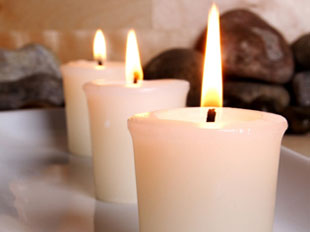Dangerous Whiff
 Their fragrance and hue add ambiance, whether it’s a romantic touch, festive flair, or relaxing serenity. But while these decorative flames can stylize a room, scented candles do have drawbacks. Many emit harmful toxins that can cause health problems, including respiratory issues, mental and behavioral dysfunction, or organ damage.
Their fragrance and hue add ambiance, whether it’s a romantic touch, festive flair, or relaxing serenity. But while these decorative flames can stylize a room, scented candles do have drawbacks. Many emit harmful toxins that can cause health problems, including respiratory issues, mental and behavioral dysfunction, or organ damage.
Burn down your risk for getting sick by understanding which wick to pick:
- Avoid candles with metal core wicks. One study found that in only 2 hours, they can release enough airborne lead to threaten human health.
- Go with soy–based wax candles or beeswax; both seem much safer than petroleum–based paraffin, which releases carcinogenics like benzene, toluene, and formaldehyde.
- Refrain from using candles in jars, which are more oxygen deprived and therefore more likely to produce soot.
- Stay away from slow–burning candles, which generally have greasy additives that could jeopardize your indoor air quality.
- Trim wicks after each use and keep them at about a quarter inch to reduce the risk of combustion.
- Turn off fans and central cooling or heating systems when lighting candles — the draft can cause incomplete burning and spread pollutants.

